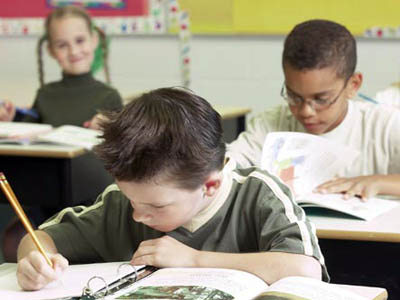Exposure to violence disrupts kids’ health
 Washington, Apr 22 : School-going kids, who witness violence in urban communities, display post-traumatic stress symptoms, a new study has found.
Washington, Apr 22 : School-going kids, who witness violence in urban communities, display post-traumatic stress symptoms, a new study has found.
The researchers also found that these children suffer physiological effects with a disruption to their normal cortisol production pattern during the day, which may have long-term negative effects on their health.
Dr. Shakira Franco Suglia, from the Harvard School of Public Health, and colleagues said that as these kids are not diagnosed with post-traumatic stress disorder, doctors fail to pick up these abnormal physiological symptoms.
While the mechanism behind this tendency is not confirmed yet, scientists have suggested that the body’s stress-response system might be involved.
Cortisol is a hormone, which is regulated by the stress-response system, and its levels are typically highest in the morning and fall gradually throughout the day.
Stress-induced changes to how cortisol is produced and regulated can lead to a weaker immune system, and increased fat storage in the abdominal region linked to cardiovascular disease and diabetes.
In the study, researchers examined the impact of exposure to community violence on physiological markers of stress response in children.
They specifically looked at the influence of post-traumatic stress symptoms (e. g. difficulty with attention or sleep, intrusive thoughts, flashbacks, worries) on the daily cortisol response among 28 girls and 15 boys aged 7-13 years old.
Mothers rated their child’s exposure to community violence (e. g. hearing gunshots, witnessing or experiencing shoving, hitting, punching, knife attacks, shootings) and the resulting post-traumatic stress symptoms.
Also, they collected saliva samples from the children four times a day over three days to measure cortisol production over the course of the day.
The researchers found a link between exposure to community violence and a disruption to the stress pathways in the body.
Particularly, they found that the higher children scored on the stress symptoms, the greater the disruption to their cortisol production pattern and the higher their cortisol levels over the course of the day, especially in the afternoon and evening.
Suglia concluded: “Our study indicates that important biological effects occur in children living in high-crime neighborhoods, although with less severe distress symptoms than those experienced by children diagnosed with post-traumatic stress disorder. As a result, they may not come to the attention of healthcare providers and a large number of children may be impacted with broad adverse health effects.”
The study has been published online in Springer’s International Journal of Behavioral Medicine. (ANI)